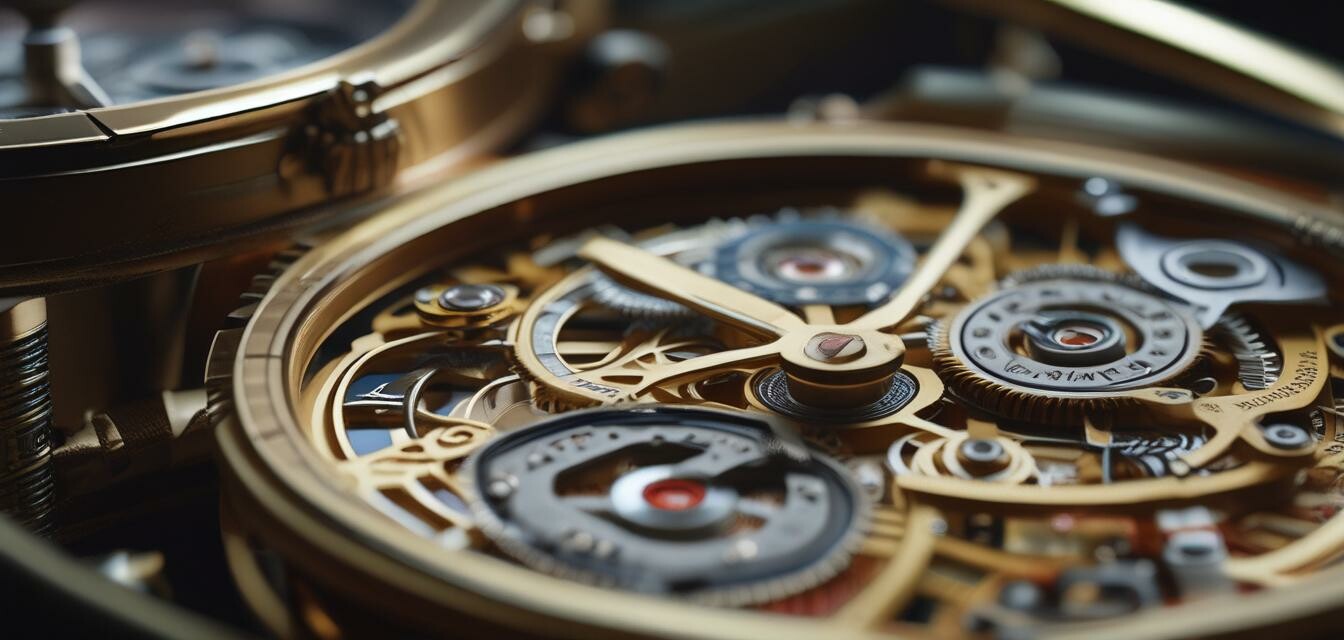
Craftsmanship Behind Luxury Watches: A Look at 2025 Innovations
Key Takeaways
- Luxury watchmaking blends traditional craftsmanship with modern technology.
- Innovations in materials and mechanisms are reshaping the industry in 2025.
- Brands are focusing on sustainability and ethical manufacturing.
- Artisanal techniques remain vital for creating unique and high-quality timepieces.
The world of luxury watches is constantly evolving, marrying traditional artistry with cutting-edge innovations. In this article, we will delve into the craftsmanship that drives the luxury watch market in 2025, exploring how brands are combining artisanal techniques with modern technology to create exquisite timepieces.
The Evolution of Craftsmanship in Luxury Watchmaking
Luxury watches have always been a testament to the skills and dedication of their makers. With advancements in technology, the craftspeople are now blending age-old techniques with contemporary methods. Here's a look at some of the key historical influences that have shaped today's luxury watches:
| Period | Influence on Craftsmanship |
|---|---|
| 18th Century | Introduction of the pocket watch and intricate mechanisms. |
| 19th Century | Mass production begins, but luxury brands maintain artisanal qualities. |
| 20th Century | Quartz movements transform precision and affordability. |
| 21st Century | Focus on sustainability and smart technology integration. |
Innovations in 2025
The luxury watch industry in 2025 showcases remarkable innovations that enhance the functionality and appeal of timepieces. Here are some trending innovations:
- Smart technologies: Enhanced compatibility with smart devices while retaining traditional aesthetics.
- Advanced materials: Use of ceramic, titanium, and advanced alloys for lightweight and durable designs.
- Sustainable practices: Brands adopting eco-friendly materials and ethical sourcing.
- Aesthetic customization: Customizable dials, straps, and cases to cater to individual tastes.
Artisanal Techniques: The Heart of Luxury Watches
Even with the rise of technology, the essence of luxury watches lies in artisanal craftsmanship. Techniques passed down through generations continue to flourish. Here are some of these techniques:
- Hand-finishing: Every component is meticulously polished and crafted by skilled artisans.
- Engraving: Intricate designs etched into cases and movements add unique character.
- Skeletonizing: Showcasing internal movements through transparent dials demonstrates technical prowess.
- Jeweling: Rubies and sapphires reduce friction and improve the overall longevity of the movement.
Popular Luxury Watch Brands and Their Innovations
Many well-known brands are leading the charge in combining craftsmanship with innovation. Here's a quick look at some main players and their approach to modern watchmaking:
| Brand | 2025 Innovation Focus | Signature Craftsmanship |
|---|---|---|
| Breitling | Smartwatch functionalities in luxury designs | Precision movement assemblies |
| Cartier | Sustainability in materials usage | Artistic watch dials |
| Hamilton | Integration of advanced quartz technology | Classic American style with modern touches |
| Omega | Innovative anti-magnetic movements | Luxury mechanical craftsmanship |
| TAG Heuer | Enhanced smart tech for sports enthusiasts | High-precision chronographs |
Conclusion: Merging Tradition with Innovation
As we look forward to 2025, the luxury watch industry will continue to blend traditional craftsmanship with innovative technologies. As enthusiasts, staying updated is crucial to understand the latest trends and developments. For more information on specific brands and buying guides, check out our Buying Guides and News and Trends.
Pros
- Combines tradition with modern technology.
- Increased focus on sustainability.
- Diverse options for customization.
- High-quality craftsmanship promotes trust and value.
Cons
- High costs associated with luxury craftsmanship.
- Complex technology may deter traditional enthusiasts.
- Market saturation with numerous brands.

